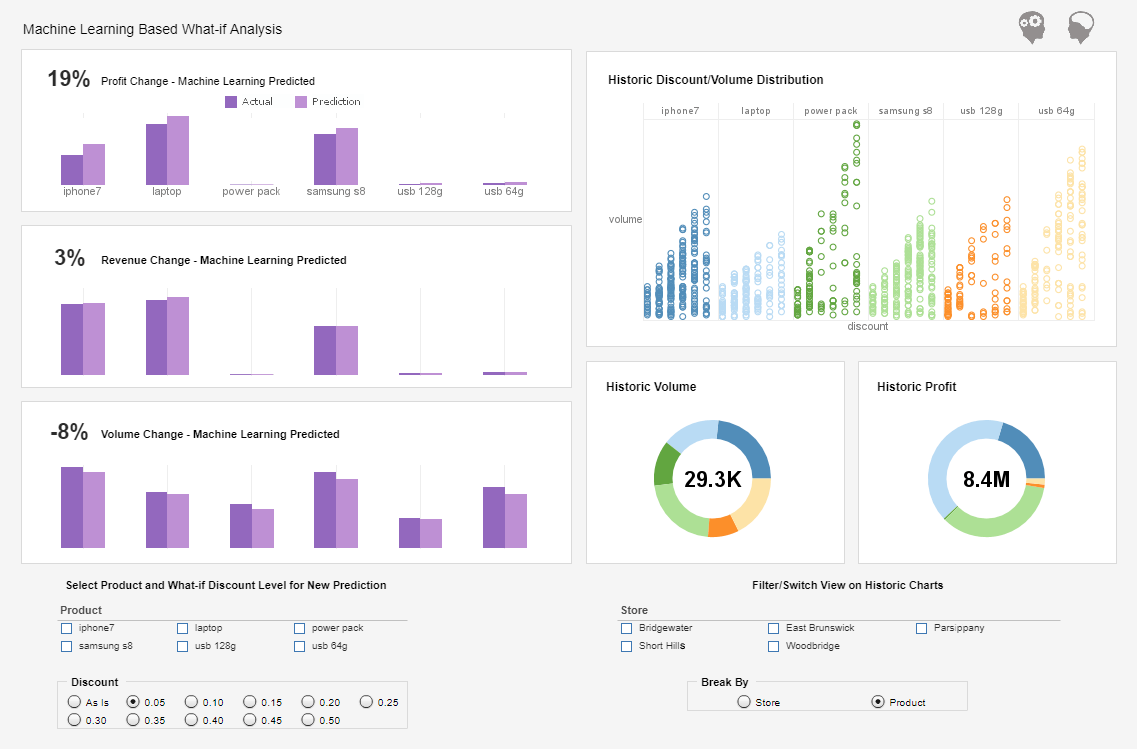InetSoft on DM Radio: More Useful Tips on Information Visualization
This is the continuation of the transcript of DM Radio’s program titled “The Eyes Have It: Ten Reasons Why Data Visualization Rocks.”
Eric Kavanagh: Yeah that’s a good point. And I guess Rich, maybe I will throw it over to you for one more comment before our next break. What are some of the bigger mistakes you have seen people commit when using data visualization techniques?
Rich Penkowski: Well, I think that just because we are using an advanced technique does not mean that we cannot try to triangulate and confirm our results, right. I mean I think that people sort of get a little bit enamored and can sort of like identify trends that may or may not be accurate. There sort of can be a whole series of false positives.
And the idea to cross-check your conclusions in data using more than one technique or more than one dataset cannot be abandoned just because you can look at information in a more sophisticated way and sort of attempt to identify patterns in some different ways, right. You still need to use the intellectual rigor and the analytic discipline to make sure that you are taking the correct actions based on the data that you are seeing.
Byron Igoe: Right. And also correlation does not equal causation.
Rich Penkowski: Exactly, exactly.
Eric Kavanagh: Yeah, that’s a good one. Alright folks, let’s go ahead and push this thought. We will be right back. You are listening to DM Radio.
Eric Kavanagh: Okay folks, back here at DM Radio. The topic of course is data visualization, and next up is Doug Cogswell. It's been a while, of ADVIZOR Solutions, but welcome back to DM Radio.
Doug Cogswell: Yeah, thanks Eric, great to be back.
Eric Kavanagh: Sure thing. So what's your overview of reasons why data visualization rocks?
Doug Cogswell: Well my three hot reasons why it rocks is first, it helps you see stories that you might not otherwise see and understand, and second it helps you explore thought threads through these stories and third, it's highly collaborative and can bring teams together in discussions around their data.
Eric Kavanagh: Okay. Yeah I agree with that highly collaborative. And it's much more intuitive, isn’t it? That’s kind of to Rich’s point at the beginning of the hour here. When you look at a visualization of data, I think the brain is just more in tune or more intrinsically designed to absorb patterns and shapes than it is to parse and comprehend numbers, right?
Doug Cogswell: Yeah. And we like to say that the data, a business dataset is full of all kinds of stories and interesting trends and facts and causations, and it helps people really see those stories and understand them. And one of our customers at Dartmouth College made a quote that, “visualization enables users to uncover hidden relationships they didn’t know existed”.
So it's this exploration. It's not that they were looking for A. They weren’t. They saw it in the data. I will often hear, why didn’t we have this data before? In fact, they did. It was in a report. They just didn’t see it. Next, the concept, these trends, these patterns are all there, but you need to get it out in a way that the human mind can see it and understand the story. It is not just a big bar, but this bar is linked to these other things, and here is what it means together.
Doug Cogswell: Another key benefit is the speed at which insights can be gained. When users interact with visualizations, they can quickly filter, drill down, and pivot the data to answer questions in real time. This immediacy is crucial for decision-making, especially in fast-paced business environments where waiting for static reports can slow progress.
Eric Kavanagh: That’s a great point. The interactive aspect really changes the game. Instead of passively consuming information, users become active participants in the analysis process. They can test hypotheses, validate assumptions, and even uncover anomalies that might have gone unnoticed in traditional tabular formats.
Doug Cogswell: Absolutely. And as organizations continue to collect more data, the ability to visualize complex relationships becomes even more important. Good visualization tools help users manage information overload by highlighting what matters most, making it easier to focus on actionable insights rather than getting lost in the details.


